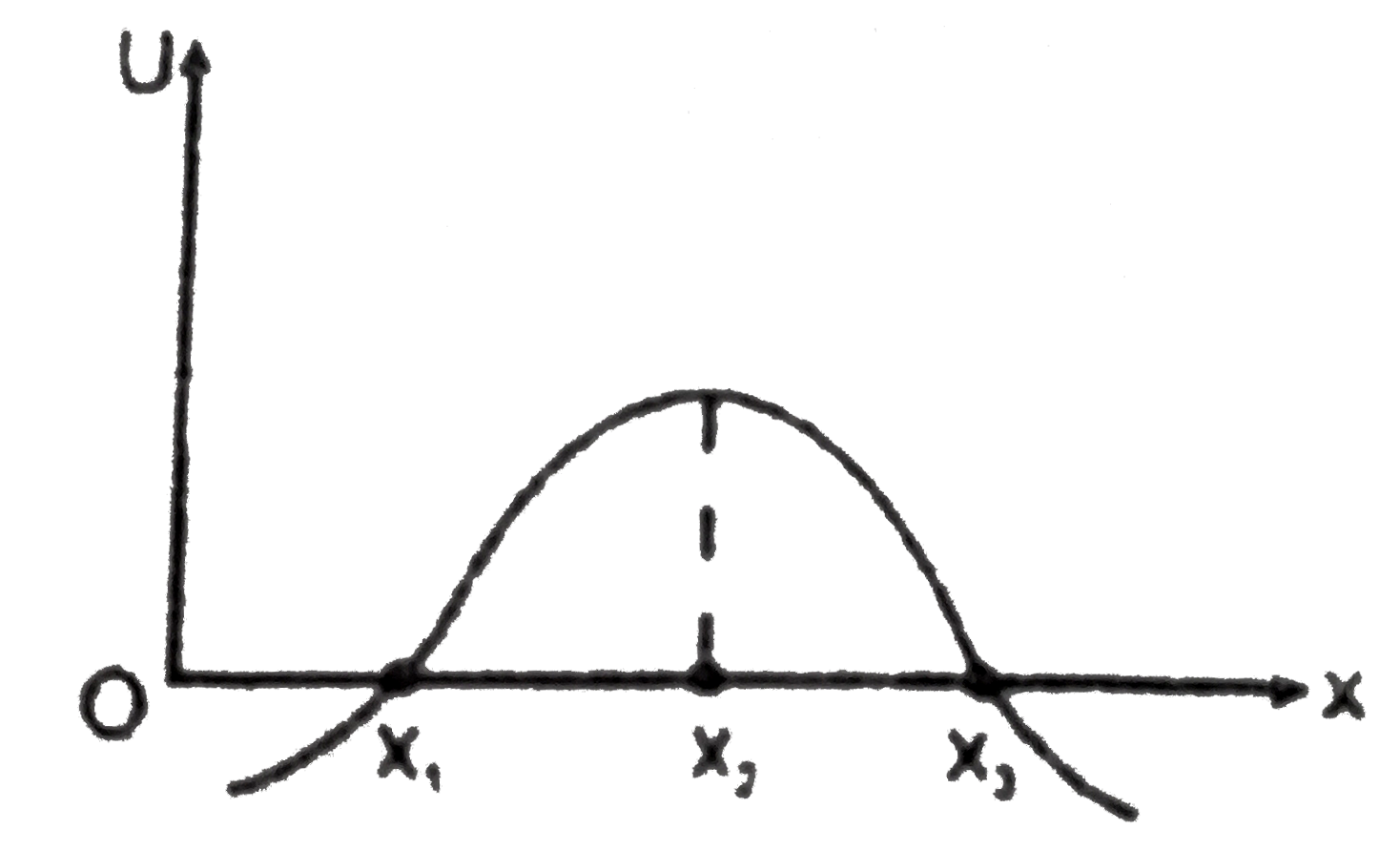A point particle of mas 0.5kg is moving along the x-axis under a force described by the potential energy U shown below.It is projected towards the right from the origin with a speed v.What is the minimum value of v for which the partilce will escape infinitely far away from the origin:

2√2m/s
2 m/s
4m/s
the particel will never escape
The correct Answer is:B
Kmin+U_(min)=0
12×0.5×v2=1∴v=2m/s
Topper's Solved these Questions
- CONCEPT BUILDERBOOK - DISHA PUBLICATIONCHAPTER - CONCEPT BUILDEREXERCISE - Exercise-1 Concept Builder (topic 4:Collisions)
1 Videos
- COMMUNICATION SYSTEM BOOK - DISHA PUBLICATIONCHAPTER - COMMUNICATION SYSTEM EXERCISE - EXERCISE-2 : Concept Applicator
30 Videos
- CURRENT ELECTRICITYBOOK - DISHA PUBLICATIONCHAPTER - CURRENT ELECTRICITYEXERCISE - EXERCISE-2 Concept Applicator
23 Videos
Similar Questions
A particle of mass m = 1.0 kg is free to move along the x axis. It is acted upon by a force which is described by the potential energy function represented in the graph below. The particle is projected towards left with a speed v, from the origin. Find minimum value of v for which the particle will escape far away from the origin.

View SolutionIn the figure shown the potential energy U of a particle is plotted its position 'x' from origin. Then which of the following statement is correct A particle at :

View Solution
Knowledge Check
A point particle of mass 0.5 kg is moving along the x-axis under a force described by the potential energy V shown below. It is projected towards the right from the origin with a speed v. What is the minimum value of v for which the particle will escape infinitely fasr away from the origin ?
 A2√2ms−1B2ms−1C4ms−1DThe particle will never escape
A2√2ms−1B2ms−1C4ms−1DThe particle will never escapeA uniform magnetic field B=B0ˆj exists in space. A particle of mass m and charge q is projected towards X-axis with speed v from a point (a,0, 0). The maximum value of v for which the particle does not hit the Y-Z plane is
ABqamBBqa2mCBqamDBq2amA particle is projected with velocity V0along axis x . The deceleration on the particle is proportional to the square of the distance from the origin i.e., a=ωx2.distance at which the particle stops is
A(3v202α)12B(2v03α)12C(2v203α)12D(3v202α)13
The potential energy of a particle of mass 5 kg moving in the x−y plane is given by U=(−7x+24y)J, where x and y are given in metre. If the particle starts from rest, from the origin, then the speed of the particle at t=2s is
View SolutionThe potential energy of a particle of mass 5 kg moving in the x−y plane is given by U=(−7x+24y)J, where x and y are given in metre. If the particle starts from rest, from the origin, then the speed of the particle at t=2s is
View SolutionThe potential energy of a particle of mass 5 kg moving in the x−y plane is given by U=(−7x+24y)J, where x and y are given in metre. If the particle starts from rest, from the origin, then the speed of the particle at t=2s is
View SolutionIn the figure shown the potential energy U of a particle is plotted its position 'x' from origin. Then which of the following statement is correct A particle at :

View SolutionTwo particle are moing along X and Y axes towards the origin with constant speeds u and v respectively. At time t=0, their repective distance from the origin are x and y. The time instant at which the particles will be closest to each other is
View Solution
